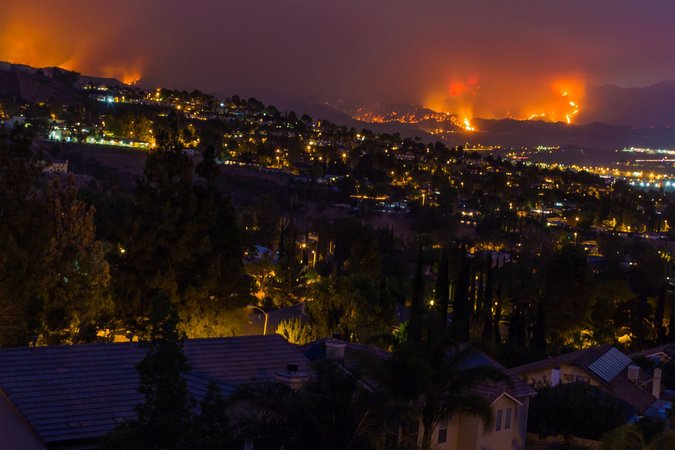As Wildfires Change the American West, Social Inequity Persists in Public Response
A pair of working papers finds that high-value homes and whiter, more educated, and wealthier communities receive disproportionate resources during and after a wildfire.
A new pair of working papers by Resources for the Future (RFF) finds that white, educated, and wealthy communities in the western United States tend to receive disproportionate protection against wildfires. The research, coauthored by RFF Fellow Matthew Wibbenmeyer, paints a picture of inequalities in wildfire management and illustrates how groups with heightened access to decisionmakers receive a greater portion of the public good.
“In the heat of the moment, fire managers have to make tough decisions that will change people’s lives,” Wibbenmeyer said. “In choosing how to deploy fire suppression resources, they tend to face a variety of pressure from politicians and influential community members. In a similar vein, well-off communities are able to advocate for themselves more effectively than historically marginalized communities to receive the means to prevent future fires.”
While evidence from previous studies indicates that a fire’s proximity to homes is a key predictor of suppression costs, few studies have evaluated priorities across areas threatened by fire. The first paper, “Priorities and Effectiveness in Wildfire Management: Evidence from Fire Spread in the Western US,” examines the allocation of fire suppression effort by comparing historical wildfire perimeters to the spatial pattern of threatened resources (especially homes) on the landscape. The paper finds that fire management agencies are more likely to protect high-value homes during a fire.
Some other key findings:
- Fires are more likely to stop spreading as they approach homes, with the likelihood increasing with the number, and especially the value of, homes. The model finds weak evidence that managers preferentially protect wealthy neighborhoods.
- Fire spread is 16 percent more likely to be halted when a fire is approaching a typical inhabited area. However, when the average value of properties in the fire’s path increases from $200,000 to $400,000, the probability of suppression increases by another 6.2 percent.
The second paper, “Inequality in Agency Responsiveness: Evidence from Salient Wildfire Events,” is a first-of-its-kind study that examines the efforts federal agencies undertake in the aftermath of a fire. Wibbenmeyer and coauthors find that following fires, agencies increase prescribed burns and thinning of risky vegetation projects only near affected communities with high socioeconomic status.
This paper’s findings are consistent with other studies showing that communities with high socioeconomic status receive a larger portion of limited federal budgets, partially because these communities can effectively pressure governments to meet demands.
Other key findings:
- Nearby fires increase the rates of fuel treatment in communities with a relatively high percentage of high-income, well-educated, and white residents. Fuel treatments reduce fire intensity and lessen damage from future fires.
- Prior research shows that communities with more white, non-Hispanic residents are better able to mobilize, which suggests that additional resources provided by government agencies may be at least partially a function of community mobilization, not just biased decisionmakers.
“As climate change increases wildfire activity in the western United States, the allocation of wildfire management resources becomes all the more important to consider,” Wibbenmeyer said. “Going forward, this research may inform decisionmakers’ assessments of solutions that provide all communities with the resources they need for our changing future.”
To learn more about manager response during fires, read, “Priorities and Effectiveness in Wildfire Management: Evidence from Fire Spread in the Western US,” by Andrew J. Plantinga of the University of California, Santa Barbara (UCSB); Randall Walsh from the University of Pittsburgh; and RFF Fellow Matthew Wibbenmeyer. For federal agency response after wildfires, read “Inequality in Agency Responsiveness: Evidence from Salient Wildfire Events” by Wibbenmeyer, Plantinga, and Sarah Anderson of UCSB.
Resources for the Future (RFF) is an independent, nonprofit research institution in Washington, DC. Its mission is to improve environmental, energy, and natural resource decisions through impartial economic research and policy engagement. RFF is committed to being the most widely trusted source of research insights and policy solutions leading to a healthy environment and a thriving economy.
Unless otherwise stated, the views expressed here are those of the individual authors and may differ from those of other RFF experts, its officers, or its directors. RFF does not take positions on specific legislative proposals.
For more information, please see our media resources page or contact Media Relations and Communications Manager Annie Tastet.



